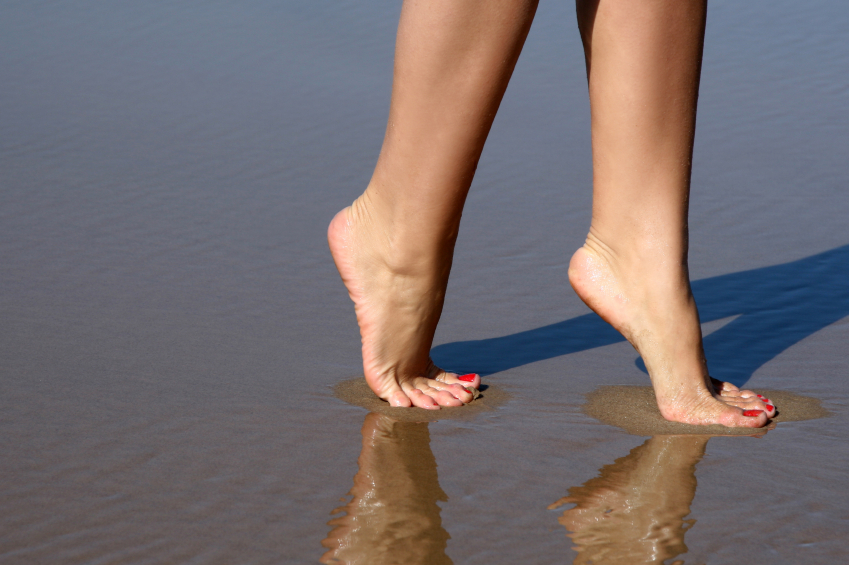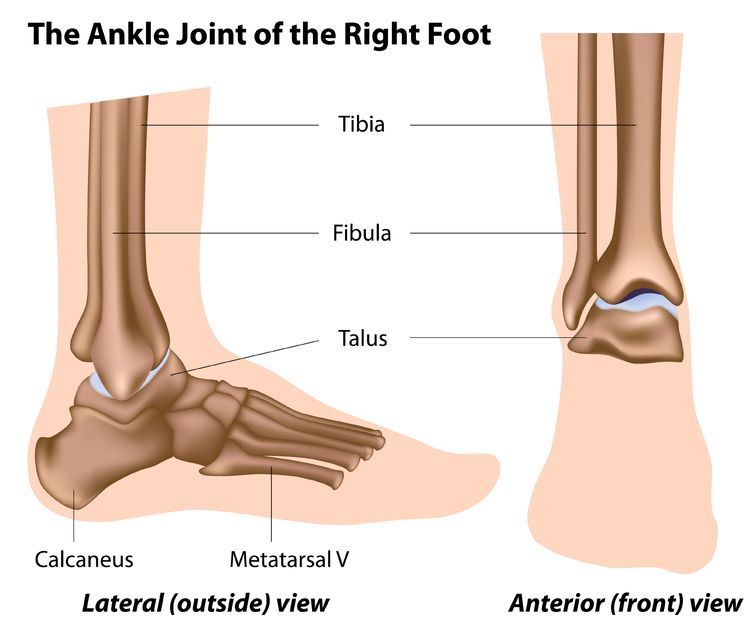Ankle and Foot Exercises Improve Strength and Flexibility
by ACE Physical Therapy and Sports Medicine Institute
Tips for Ankles and Foot Exercises.
- Contact your Physical Therapist for guidance on proper form of these exercises if you are unsure.
- Perform these and any new exercise daily for 3-4 weeks to get your nervous system working efficiently with the muscles and joints.
- If you hurt your ankle, use the RICE (rest, ice, compression, and elevation) and seek advice from your Physical Therapist.
- The body attempts to shift your body weight on your feet initially to maintain balance.
Balance training can be performed daily. Your Physical Therapist can help you get started with a good balance program.
If your foot or ankle is in pain, simple activities are suddenly a challenge. Normal mobility for almost every aspect of daily living can become limited, difficult and agonizing. At the same time, you may react to the pain by overburdening other muscles and end up causing more injury and pain. You can help prevent injury through regular ankle and foot exercises. Your Physical Therapist can provide you with a well-planned exercise routine to compliment your overall conditioning regimen for long-term health and injury prevention.
The Interconnected Ankle and Foot Complex
A foot or ankle injury can impact all aspects of the foot/ankle complex including the strength of the muscles, flexibility of the soft tissues and the neural communication. Therefore, the ankle and foot must be conditioned as one unit to prevent injuries to any aspect of the complex.
The ankle joint is made up of three main bones: Tibia, Fibula and Talus. The Talus is part of the foot complex, also. It sits on top of the Calcaneous and articulates with the Navicular and Cuboid bones. The Talus and Calcaneous make up the “Rear-foot” and are involved with multiple motions when a person moves their foot and ankle. The “Rear-foot” is the part that connects the foot to the leg bones via muscles and ligaments (and other non-elastic tissues).
Conditioning the Complex through Ankle and Foot Exercises
The conditioning program that your Physical Therapist can prescribe will prepare the muscles and ligaments to be better prepared to handle the intense stresses and strains that are applied in daily living. Routine activities place tremendous force through this area. The force applied in athletic activities is off the chart. The ankle must rely on the muscle to apply “dynamic stability” forces to it when these high level stresses occur because the static stabilizing structures are not capable of doing it on their own.
The following are a series of exercises that will help to prevent an injury to the foot/ ankle complex. The exercises should be performed on both ankles and this blog will offer a description based on the Right side. Some will be bi-lateral in nature, but some will require that you exercise each foot and ankle individually. All of the strengthening exercises should be performed in sets of 15-20 repetitions and 2-3 sets per day. The stretching should be performed in sets of 3-5 repetitions and each stretch should be held at a comfortable stretching position for 20-30 seconds or longer. If you have questions, seek advice from your Physical Therapist.
Strengthening Exercises
Heel Raises: Stand upright near a stationary object such as a table or railing. You might have to lightly hold the object for balance. Your feet should be pointing straight ahead. Begin the exercise by pushing downward on the front of your feet and allow the heels to rise off of the floor as high as they can go. Pause at the top and slowly lower down to the beginning position. Repeat this same exercise with the toes / feet pointing inward (“pigeon toed”) and outward (“duck-toed”).
Toe/Heel Walking: Begin this exercise by rising up onto your toes and maintain this position with the heel off of the floor while you walk around. The reduced surface area of the foot greatly enhances the amount of muscle action that is needed to stabilize the foot /ankle complex. You can do this as often as possible. Secondly, walk with your off of the ground the entire time. Don’t allow your toes to touch the ground. This will develop the front of the shin musculature and put a dynamic stretch on the Achilles tendon.
Single leg balance: Stand near a stationary object, such as a table or railing, but avoid holding on to it. Lift the one foot off of the ground. Try to balance on the opposite foot for 30 – 60 seconds. You can perform this exercise with the leg that you are balancing on fully extended or slightly flexed. To make it more difficult and force the entire musculature of the leg that you are balancing on to work harder, close your eyes. Eye sight is an important sense that helps us balance. The lower extremity that you are balancing on will “shake” and you might sway as the muscles react reflexively to maintain your balance. The goal is to be able to stand “quietly” (very little lower extremity movement) and balance for as long as possible. Lastly, standing on a pillow or some other kind of unstable surface will continue to make this drill more difficult. The muscles and nerves will have to be more active when the surface is unstable. This activity will prepare your foot / ankle complex for the needed reflexive response to maintain balance and avoid an injury.
Single leg cone touch: Place two “exercise cones” or other objects that are approximately 6-8 inches tall on the floor at the 10 o’clock and 2 o’clock position. Stand on one leg approximately 1 foot behind the cones. Slowly squat down and cross-touch one of the cones with the opposite hand (be sure to bend your knee as you squat down). Return to an erect position and then repeat to the other cone. Repeat this routine for 10 – 15 repetitions to each cone. Attempt to remain on one leg throughout the exercise routine and then switch legs. If you have difficulty balancing on one leg, you can “toe touch” with the other leg.
Eversion /Inversion: You will have to get a piece of Theratubing from your Physical Therapist to be able to complete these exercise motions. Long sit and keep your legs apart, but not spread too far. Take the piece of Theraband and tie a loop at one end. Place the loop around the forefoot of the R foot. Pull the Theraband around the outside of the L foot and hold it with your hands.
Eversion: Slowly move the L foot away from the R leg and the Theraband will begin to “draw” tight. This will be the resistance that the R ankle will have to overcome to be able to move into the everted position. The R foot toes should be pointing upward. Turn the R foot away from the L foot as far as it can move (this is not a great distance). DO NOT move the rest of the R leg. Many people “roll” their entire leg and the ankle musculature does not have to “work” when that happens. When the foot reaches the end of the available motion, pause and then slowly return to the starting position.
Inversion: Cross your legs with the L leg on top of the R leg. Your ankles should be close together to start. Keep the Theraband looped around the forefoot of the R foot. Pull the band around the inside of the L foot and hold it with your hands. Slowly move your L foot further to the R side. This will “draw” the Theraband taught and provide resistance to the inversion motion. Begin the exercise by moving the R foot towards the L side as far as it can move. DO NOT move the R lower extremity. The foot / ankle should be the only aspect of the R lower extremity that moves. When the R foot has moved as far as possible, pause and then slowly return to the beginning position.
Plank: Lie prone (on your stomach) and push yourself up off of the floor. Support your body weight on your forearms, elbows and toes. No other body part should touch the floor during the exercise. If it is too hard to support your body weight this way, you may allow your knees to touch the floor. The position should be held for 5-30 seconds or longer.
Side Planks: Lie on one side. Push your body weight up off of the floor and support it with your forearm and elbow on the side that you are lying on. The side of your foot rests on the floor during the exercise routine. If this position is too difficult, keep the entire side of your leg below the knee on the floor during the exercise. Hold the position 5-30 seconds or longer.
Stretching Exercises
Calf stretch: This exercise can be performed in many ways. One simple way is to stand with your hands touching a wall. Your feet should be away from the wall and staggered. The “back” leg is the leg that will feel the stretch in the calf. Keep your knee of the “back” leg straight and the heel of that foot on the floor at all times. Slowly bend the knee of the “front” leg and lean inward towards the wall. You should feel a stretch in the calf muscle of the “back” leg just below the knee. Repeat this with both legs.
Calf stretch bent knee: Start in the same position as above and perform the same exercise except when you lean towards the wall allow the knee of the “back” leg to bend slightly. Your heel of that foot has to remain on the floor. You should feel this stretch lower on the leg and possibly down as far as the back of the heel.
The ankle and foot complex will need to stay healthy for us to move around easily and comfortably. Any discomfort in this area can make the simplest tasks very difficult to complete. The above exercises will help you maintain a strong, well-conditioned and flexible complex and should enable you to perform most of life’s activities without hesitation.
Read more articles on our main website blog at: ACE-pt.org/blog
Vist our main website at: www.ACE-pt.org


